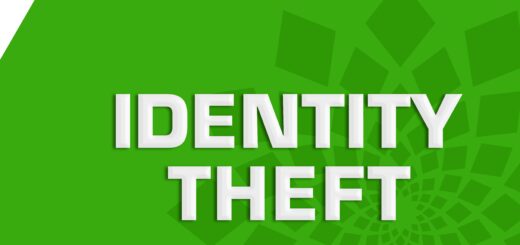How to Check for Identity Theft
Identity theft is becoming more common with every technological advancement and the toll it takes keeps rising. It now accounts for billions of dollars in losses and can come in many forms, from making small purchases with someone else’s credit card to buying and renting properties using stolen information.
While there isn’t a surefire way to avoid identity theft entirely, catching it early on can save you thousands of dollars and a long time of repairing its ensuing damage. Here is some information on how to check for identity theft.

What is identity theft?
Identity theft is when a person uses someone else’s personal and financial information for their own benefit. It can be using credit card information to make illicit purchases or using Social Security numbers to forge fake identities, buy property or even use health care information to get treatment.
Some ID theft can have limited consequences, for example, someone purchasing new headphones using a lost credit card. However, it can become a much bigger problem if purchases are large or, much worse, if your identity is used for criminal activity.
How to know if your identity has been stolen
If you want to avoid identity theft, it’s important to pay careful attention to your personal information, your bank accounts and your social media accounts. If identity theft is caught early, a lot of its damage can be repaired and further consequences avoided.
Monitor your credit
One of the most common forms of identity theft is credit card fraud and it is the easiest to check. If you keep tabs on your spending and your open accounts, you can catch possible fraud quickly and have credit card companies help solve the problem. You can also contact credit bureaus and ask them to delete any false information from your report.
You can monitor your credit, first and foremost, on your credit cards’ mobile apps. Check them regularly to make sure there are no suspicious transactions. It might also be helpful to use credit monitoring services to keep tabs on new, unsolicited inquiries and any accounts that may be opened in your name.
Identity theft protection services
There are many identity theft protection and monitoring services available. These monitor your credit and scour the entire internet (dark web included) to find suspicious activity with your information and notify you of data breaches. You’ll get fraud alerts when your information is being used or shared in strange websites or when changes on your information occur.
Identity protection services may also include cybersecurity to actively protect your wi-fi connection, online information, can request a credit freeze and even offer identity theft insurance.
Signs of identity theft
Even if you’re constantly checking for identity theft, some signs are not easy to find even when looking for them, but there will always be warning signs. There are many types of identity theft, so red flags can come in a variety of ways.
Unrecognizable purchases
Keep an eye on your spending, whether it’s by reviewing your monthly balance statements or, better yet, monitoring your daily transactions online or through a mobile app. As soon as you see something you don’t recognize, call the bank. Even if it’s a false alarm, taking quick action is worth it.
Unknown bills
Scammers can use your name and Social Security number to open bank accounts, apply for loans and credit accounts, or even buy property. If you suddenly get a mysterious letter or phone calls from debt collectors that point to any of this, don’t think twice about contacting both the sender and the authorities.
Unexpected rejections
If you have a good credit score, you earn consistent income and have very little debt, and yet still get rejected for a new loan or credit card, it’s time to take action. Quickly check your credit report or credit monitoring app to find any suspicious activity.
Missing letters or documents
If you’re expecting any type of letter with sensitive information, from bank statements and utility bills to a new credit card, and it doesn’t show up for a suspiciously long time, check with the financial institution — you may get a heads up of fraudulent activity and a chance to save yourself money and trouble down the line.
Also, if you’re sure you had your Social Security card or driver’s license and you can’t find them, you should, at least, check your credit or identity monitoring services to see if anything has changed.
Strange emails
While spam is common whether you’re a victim of identity theft or not, an excess of strange emails or convincing phishing attempts may be an indicator of fraudulent activity with your email and the accounts it’s connected to. Some web browsers, such as Google Chrome, offer information on compromised accounts and passwords. You can also use identity protection services that scan the web for any suspicious activity involving your information.
You can’t file a tax return
Common scams include tax-related identity theft. If at any given time you get information on a refund you did not request or you see that a return has already been filed in your name, you may be an identity theft victim. Call the IRS immediately in order to take action.
How to report identity theft
Reporting identity theft quickly can reduce the damage done to your credit and finances. Here are some steps you can take to report identity theft and get on with the recovery process.
Report to the Federal Trade Commission (FTC)
If you notice suspicious activity, file an online claim at IdentityTheft.gov as soon as you can and get a copy of the identity theft report. You can also create an account with the government agency and get resources and guides for the next steps in your recovery plan.
File a police report
Take the FTC report to your local police department and file a police report as well. If you know who the thief is or have concrete evidence, you may want to alert law enforcement immediately so that an investigation can get under way, and then take the FTC report personally. You’ll most likely need both reports to get the recovery process going.
File an insurance claim
If you have identity theft insurance or one of your insurance policies includes it, contact the insurance company and file a claim as soon as you can, and provide the FTC and police reports. Make sure you have all necessary documentation to prove both your identity and the fraudulent activity.
Report to the credit bureaus
An important step to avoid further damage is to alert the major credit bureaus (Experian, TransUnion and Equifax) of the fraud. They will freeze your credit report and alert lenders in case identity thieves attempt to open new accounts.
As you can see, you need to always be on top of your finances and that includes regularly checking for signs of identity theft.
**originally published by Carlos Silva




